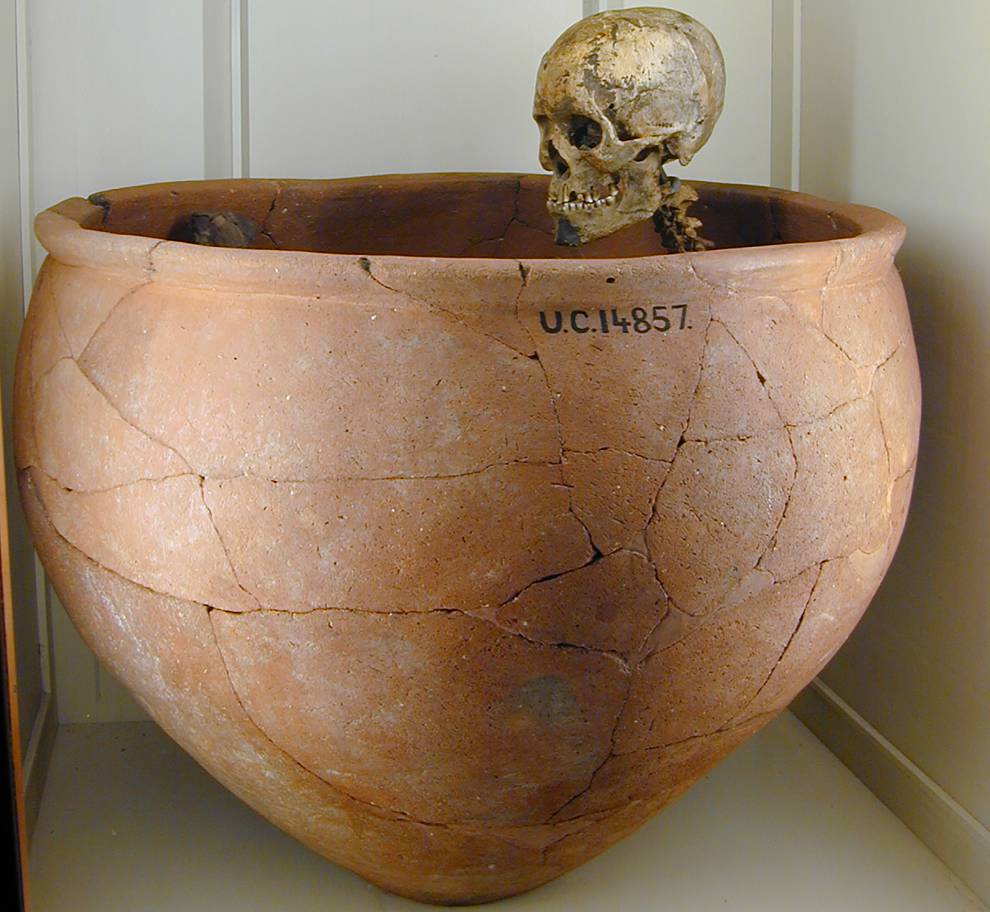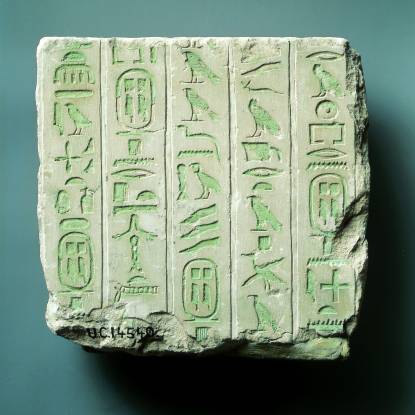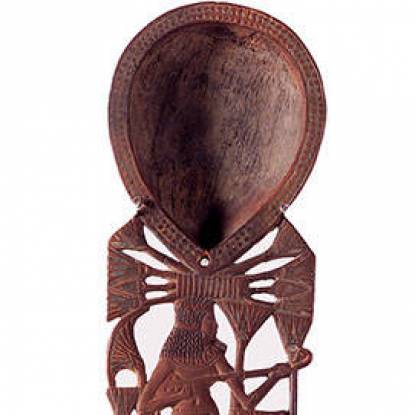Pot burial
The village of Badari is now used to refer to a distinct predynastic civilisation called Badarian. Badarian sites were found by the Egyptian Ali Suefi in 1923 and published by English archaeologists Guy Brunton and Gertrude Caton-Thompson. It is thought to span 4400–4000 BC and is the earliest farming culture in Middle Egypt.
Brunton and Caton-Thompson described this as 'a large double pot burial, in excellent condition, of an adult female'. It is displayed in the position that it was found at North Spur Burial (59). The Petrie Museum also displays other items from Badarian civilisation, including black-topped pots and jewellery, that were often buried as funerary goods.
The skeleton was repaired after damage during World War Two, though some material was further damaged in 1985. In 1995, gynaecologist Mark Broadbent identified the skeleton as male on the basis of pelvis and femur length. He also thought the man was over 6 foot tall.

This detail about gender and height helps transform the museum object into a real person who lived and breathed. Attitudes to the display of human remains in museums, whether skeletal or preserved (such as mummies), have changed over the last 20 years. Some people find such displays offensive or uncomfortable, while others think they are useful in explaining the past. Should we display the burial in this way?
Further information
Read more about the decision to temporarily cover up mummies or parts of mummies at the Manchester Museum.
 Close
Close




